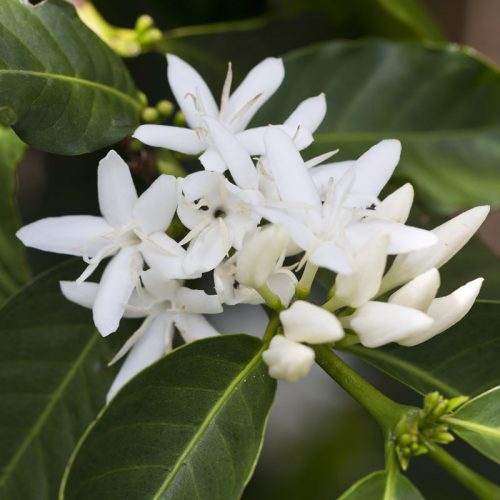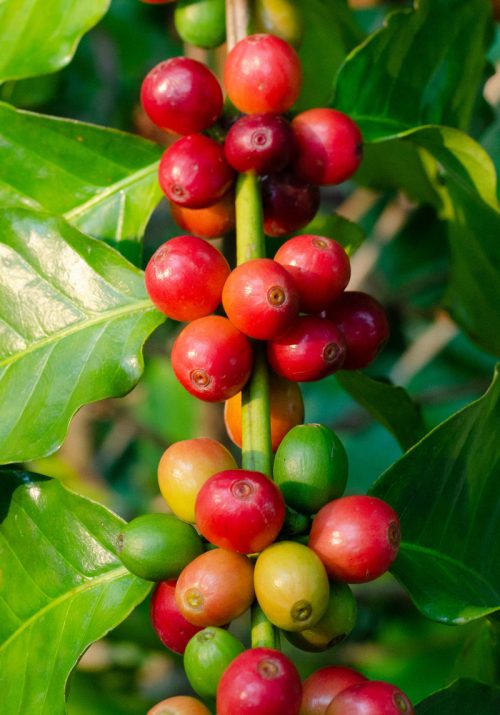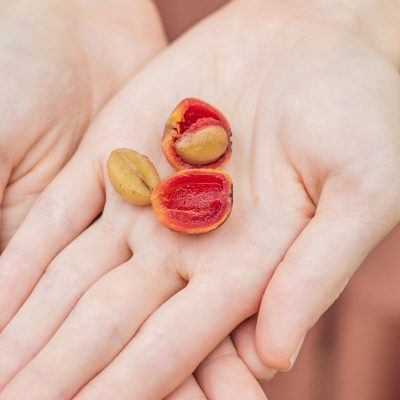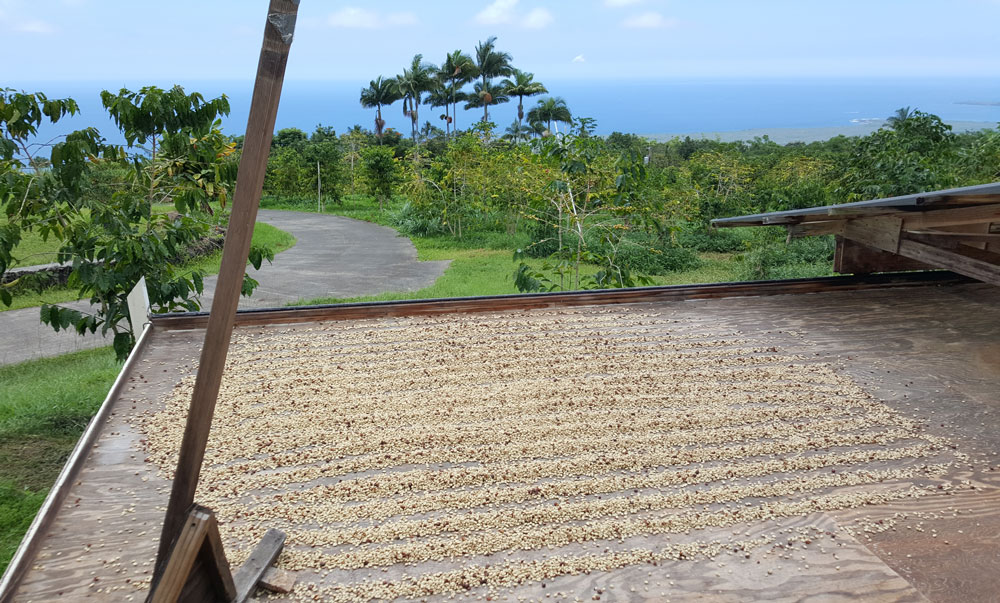Kona Coffee: From Blossom to Roast
The species of coffee tree planted here is Kona Typica – coffea arabica, identical to the original trees discovered in Ethiopia around 640 AD. This specialty tree, when planted in Kona soil, creates the unique flavor profile that characterizes Kona coffee. It differs significantly from the Robusta trees grown in Brazil and Vietnam, and the Caturra trees grown on other Hawaiian islands.

Blossoms to Cherries
Kona coffee trees bloom from January through March, in a series of ‘rounds’ of flowers at two-week intervals.
During the first part of the year, coffee trees start to sprout small, beautiful white flowers, known locally as Kona snow. Every two to three weeks, a new batch of flowers appear. These “rounds” of blossoming recur over the course of a few months.
In April, green berries begin to appear on the trees. They emerge in rounds, mirroring the rounds of blossoming that came before, and slowly start to grow and ripen. By late August, the fruit begins to turn from yellow to orange to red. Fully ripened fruit is called “coffee cherry” because of its resemblance to cherries.
Harvesting 100% Kona Coffee
As you walk through the coffee trees, depending on the season, you may see an array of colors, ranging from green to orange to red.
When the cherries are completely red, they must be hand-picked. The same branch might contain fruit from different rounds of flowering, so there will be green, yellow, orange and red fruit growing next to each other. Each cherry is picked by hand, to ensure that only the ripe, sweet cherries are picked and the unripe ones are left to mature. If branches are stripped all at once, the coffee will be sour.
Harvesting will take place several times between August and January, seven months after each flowering. A large mature tree will produce 20-30 pounds of cherry. It takes seven pounds of cherry to make one pound of roasted coffee.


Cherry to Parchment
Within a few hours of picking, the cherry is run through a special pulper, to squeeze the two seeds out of the red skin.
Once the seeds are removed from the cherry skin, they are placed in a fermentation tank overnight, to give natural yeast the time to ferment the sugar and separate it from the seeds. They are rinsed twice to make sure all traces of sugar are removed, then put on a special rack to dry.
Sun-Drying
After rinsing, the beans are spread to dry on the deck of our traditional hoshidana (drying deck), which has a rolling roof to cover the beans in the event of rain.
It takes 7–14 days to dry the beans to an optimal moisture level of 10-13%. From here, the beans are stored as pergamino, or parchment. The parchment is stored at 65 F and 65% humidity so that the beans do not lose color or become moldy.
The beans inside the parchment are different sizes (Extra Fancy, Fancy, Kona No. 1, Prime, and Peaberry) and will be sorted later using screens through which only one size passes at a time.

